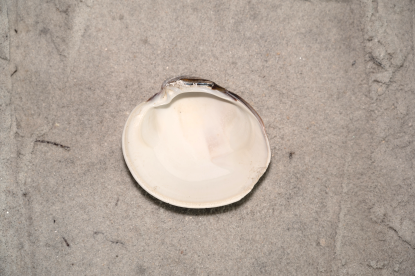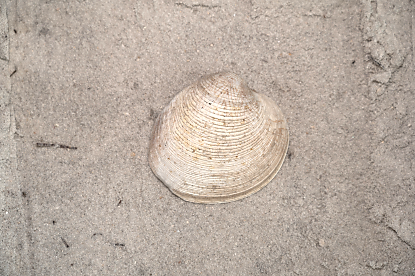

Mercenaria campechiensis
These large, sturdy bivalves can grow up to 6 inches. The inside of the shell has two muscle scars. These clams move through the mud with their hefty muscular foot. They are exceptional filter feeders and can sieve a gallon of water per hour. During this process they can absorb pollutants, bacteria and viruses from contaminated water.
This does not harm the clams, but can pose a health risk to humans consuming them.
Southern Quahogs, along with their related Northern Quahogs, are extensively harvested. The entire body is edible, not just the large adductor muscle. At seafood markets the smallest (youngest) Quahogs are called Countnecks. As they get larger, they are referred to as Littlenecks, then Topnecks, Cherrystones and finally fully grown Quahogs.
Historically, Native Americans made “wampum” (cylindrical beads) from the Quahog’s thick shell. They would drill, then punch out 1/4“ elongated tubular beads. The name “quahog” comes from the native’s name “poquauhock” meaning horse fish.
Live shells should never be taken from any Florida State Park.